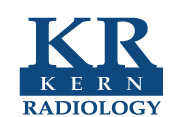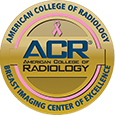New Study Shows Lung Cancer Rates Higher in Young Women vs Men

Lung cancer remains the leading cause of cancer death in the United States. More people die of lung cancer than of colon, breast and prostate cancers combined. The American Cancer Society estimates that 127,070 people will die from lung cancer in 2023, accounting for 20 percent of all cancer deaths. And while there is good news – the numbers of new lung cancer cases and deaths from lung cancer continue to decline – higher rates of lung cancer observed in women younger than age 54 have continued to persist.
Why are lung cancer rates higher in young women?
Researchers measured lung cancer incidence rates in five-year increments, finding that the overall decline in lung cancer cases was greater in men, leading to a higher incidence rate among women, ages 35 to 54.
As to why this shift in incidence rate is occurring, researchers are not entirely sure.
Having ruled out the possibilities that women experience higher carcinogenic effects from smoking than men, and that of overdiagnosis, researchers are left to hypothesize a few theories.
One thought for this shift could be that reductions in occupational exposures, such as asbestos, to which men were more commonly exposed, could have something to do with the differentiation.
Another theory concerns the risk of lung cancer that exists after smoking cessation, which varies by the type of cancer. Specifically, adenocarcinoma, which is more common in women than men, and is more likely to occur in younger people. The risk of developing this lung cancer subtype also decreases more slowly than the risk of other types of lung cancer once someone quits smoking.
Studies have also shown that women are slower to quit smoking than men.
What can women do to decrease their risk?
There are many excellent treatment options for lung cancer today. The Director of Thoracic Imaging at Arizona Diagnostic Radiology, Dr. Scott Brandman, says “these treatments are extremely effective when the disease is found in an early stage.” Unfortunately, almost half of lung cancer cases are not diagnosed until a late stage when there is regional or distant spread of cancer. According to Dr. Brandman, “Sadly more than half of people with lung cancer will die within one year of being diagnosed because they were not found until a late stage of disease. By the time symptoms appear, it is often too late. And that’s why screening for lung cancer is so important to find the cancer early.” For patients who participate in a lung cancer screening program, 70% of the detected lung cancers are early stage when treatments are most effective. Dr. Brandman also explains “that screening healthy people with a significant smoking history has proven to be a life saver. It was recently shown that lung cancer patients diagnosed in an early stage thanks to a screening exam have an overall 20-year survival rate of 80%.”
What is Low-Dose CT Screening?
Low-dose computed tomography (LDCT) screening for lung cancer is a specialized test that is used to find lung cancer before it is symptomatic and before it has spread.
The exam itself is quick and easy. While lying on your back, you are moved through a small donut-shaped machine – not a tunnel – so there is no worry of feeling claustrophobic. There are no needles for contrast or x-ray dye, and no need to fast before the exam.
Most importantly, this screening test is a covered insurance benefit for people at high risk.
How do I know if I am a Candidate for Low-Dose CT Lung Screening?
There are a few factors used to assess candidacy for this screening:
- 50 to 80 years of age.
- Significant smoking history (a healthcare provider can help determine if you meet the minimum 20 pack-year smoking history that is calculated by multiplying the number of years smoking by the number of packs smoked per day)
- Current smoker or quit smoking within the last 15 years
Several prominent groups have recommended that lung cancer screening begin at the age of 50. Dr. Brandman explains that “the American Cancer Society is the latest organization to support this starting age based on a newly released review of data on lung cancer.” He is encouraged by the additional support for screening starting at 50 years of age because Dr. Brandman says “this will help reduce the disparities in adverse outcomes from lung cancer and it will help promote gender and racial equity in finding early-stage cancer.”
Low-dose CT screening for lung cancer is available at Arizona Diagnostic Radiology and at a RadNet site near you. Our goal is to find cancer as early as possible to help people live their healthiest lives.
To see if you qualify, visit our websites.
In Arizona: https://www.arizonadiagnosticradiology.com/services/low-dose-lung-ct-scan/
In California: https://radnetimaging.com/low-dose-lung-ct-scan/






Add new comment